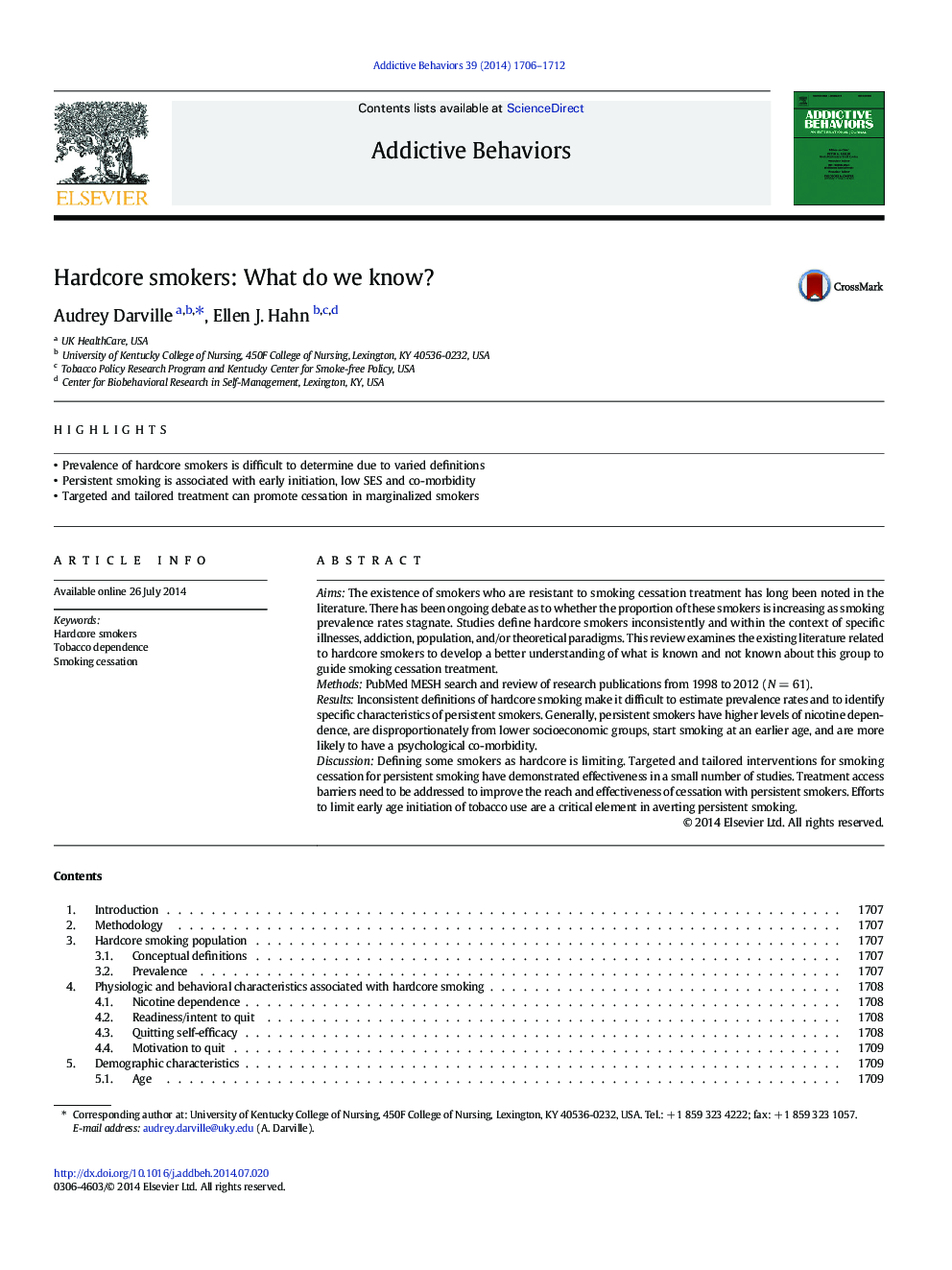| Article ID | Journal | Published Year | Pages | File Type |
|---|---|---|---|---|
| 898765 | Addictive Behaviors | 2014 | 7 Pages |
•Prevalence of hardcore smokers is difficult to determine due to varied definitions•Persistent smoking is associated with early initiation, low SES and co-morbidity•Targeted and tailored treatment can promote cessation in marginalized smokers
AimsThe existence of smokers who are resistant to smoking cessation treatment has long been noted in the literature. There has been ongoing debate as to whether the proportion of these smokers is increasing as smoking prevalence rates stagnate. Studies define hardcore smokers inconsistently and within the context of specific illnesses, addiction, population, and/or theoretical paradigms. This review examines the existing literature related to hardcore smokers to develop a better understanding of what is known and not known about this group to guide smoking cessation treatment.MethodsPubMed MESH search and review of research publications from 1998 to 2012 (N = 61).ResultsInconsistent definitions of hardcore smoking make it difficult to estimate prevalence rates and to identify specific characteristics of persistent smokers. Generally, persistent smokers have higher levels of nicotine dependence, are disproportionately from lower socioeconomic groups, start smoking at an earlier age, and are more likely to have a psychological co-morbidity.DiscussionDefining some smokers as hardcore is limiting. Targeted and tailored interventions for smoking cessation for persistent smoking have demonstrated effectiveness in a small number of studies. Treatment access barriers need to be addressed to improve the reach and effectiveness of cessation with persistent smokers. Efforts to limit early age initiation of tobacco use are a critical element in averting persistent smoking.
